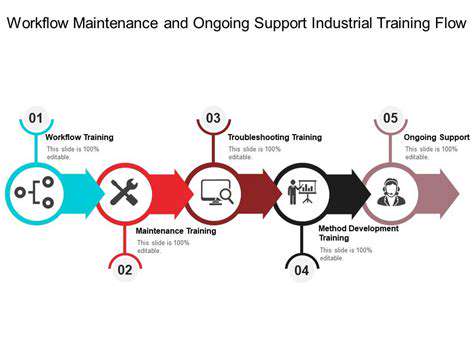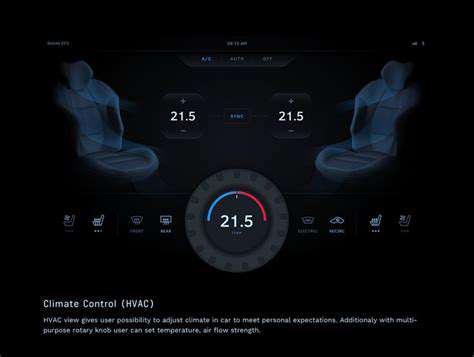Impact on Battery Chemistry
Extreme temperatures, bothhigh and low, exert significant stress on the intricate chemistry within EV batteries. Lithium-ion cells, the cornerstone of modern electric vehicle powertrains, are particularly susceptible to degradation when exposed to these harsh conditions. High temperatures accelerate the chemical reactions within the battery, potentially leading to premature capacity loss and reduced lifespan. Conversely, extremely low temperatures can hinder the flow of ions, impacting the battery's ability to deliver power effectively and potentially leading to performance issues and reduced range.
The delicate balance of electrolytes, electrodes, and other components within the battery is profoundly affected by temperature fluctuations. These changes can lead to irreversible damage to the battery's internal structure, compromising its long-term health and performance over time. Understanding and mitigating the effects of temperature on battery chemistry is crucial for optimizing the overall performance and longevity of electric vehicles.
Thermal Management Strategies
Modern EVs employ sophisticated thermal management systems to counteract the detrimental effects of extreme temperatures. These systems typically involve a combination of active and passive cooling strategies, ensuring the battery operates within its optimal temperature range. Active cooling, often utilizing coolant systems and sophisticated heat exchangers, actively regulates the battery's temperature to maintain performance and safety.
Passive cooling methods, such as the strategic placement of battery packs and the use of advanced materials with excellent thermal conductivity, also play a vital role in minimizing temperature fluctuations. These integrated approaches ensure that the battery's internal temperature remains stable, preventing overheating and extending its lifespan. The effectiveness of these thermal management strategies directly impacts the overall reliability and range of electric vehicles in diverse climates.
Long-Term Battery Health
The cumulative effect of temperature fluctuations over the lifespan of an EV battery can have a profound impact on its overall health. Repeated exposure to extreme temperatures can lead to gradual degradation in capacity, reduced charge retention, and potentially increased risk of thermal runaway. Careful consideration of the environmental conditions to which an EV will be subjected is paramount when designing the battery's thermal management system and selecting appropriate materials.
Long-term monitoring of battery temperature and performance is crucial for identifying potential issues early on. Data-driven insights gained from these monitoring systems can be invaluable in optimizing battery management strategies and extending the lifespan of EV batteries, ultimately leading to a better user experience and improved sustainability.
Advanced predictive modeling techniques can further enhance our understanding of how temperature impacts battery health, enabling us to design even more resilient and efficient thermal management systems. This proactive approach is essential for the continued development and widespread adoption of electric vehicles.
Ultimately, the ability to effectively manage the effects of extreme temperatures on battery performance is critical for ensuring the long-term viability and widespread acceptance of electric vehicles.
Optimizing Battery Performance Through Temperature Management
Understanding Battery Thermal Management Systems
Battery thermal management systems (BTMS) are crucial for maintaining optimal battery performance and longevity in electric vehicles (EVs). These systems actively monitor and regulate the temperature of the battery pack, preventing overheating and excessive cooling. Proper temperature control is essential because battery chemistry and performance characteristics are significantly impacted by temperature fluctuations. Extreme temperatures can lead to reduced capacity, faster degradation, and even safety hazards.
Understanding how these systems work is paramount to appreciating the importance of temperature management in preserving EV battery health. BTMS employ a variety of strategies, including heat exchangers, cooling fans, and advanced thermal sensors, to maintain a stable temperature range for optimal battery operation.
The Impact of Heat on Battery Performance
Excessive heat significantly degrades battery performance. Elevated temperatures accelerate chemical reactions within the battery, leading to faster capacity loss and reduced overall lifespan. The chemical processes that power the battery are sensitive to temperature, and exceeding optimal operating ranges can cause irreversible damage. This is why preventing overheating is a primary concern in EV battery management.
Heat also contributes to increased internal resistance within the battery, hindering efficient energy transfer. This reduced efficiency translates into lower range and performance degradation over time. The consequences of overheating are multifaceted and far-reaching, impacting the entire EV's operational efficiency.
The Role of Cooling in Battery Preservation
While preventing overheating is crucial, cooling plays a vital role in maintaining the optimal temperature range for the battery. Extreme cold can also negatively affect battery performance. Cold temperatures decrease the rate of chemical reactions, leading to slower charging and discharging rates and potentially impacting the overall range of the vehicle. Maintaining a balanced temperature profile is key to maximizing battery life.
Cooling systems in EVs often employ various strategies to dissipate heat effectively. These include liquid cooling systems that circulate coolant through the battery pack or air cooling systems that utilize fans to circulate air around the battery. These cooling mechanisms are often integral to the EV's overall thermal management strategy.
Advanced Thermal Management Strategies
Modern EVs utilize sophisticated thermal management strategies beyond basic cooling and heating. These strategies often involve predictive models that anticipate temperature fluctuations based on driving conditions and battery load. This allows for proactive temperature control, minimizing the impact of extreme temperatures on battery health.
Furthermore, advancements in materials science are enabling the development of more efficient and durable battery components that better withstand temperature fluctuations. These innovations are essential for maximizing the longevity and performance of EV batteries.
Battery Pack Design Considerations
The design of the battery pack itself significantly impacts its ability to withstand temperature fluctuations. Efficient heat transfer paths and strategically placed cooling components are critical design considerations. The physical layout and insulation of the battery cells play a key role in preventing localized overheating and maintaining even temperature distribution throughout the pack.
Monitoring and Maintenance for Optimal Performance
Continuous monitoring of battery temperature is essential for proactive maintenance. Sensors embedded within the battery pack provide real-time data on temperature, enabling the BTMS to respond dynamically to changing conditions. Regular maintenance of the cooling and heating components is also crucial for ensuring the system functions optimally.
This proactive approach ensures that any potential issues with temperature regulation are identified and addressed promptly, preventing further damage to the battery pack and maximizing its operational lifespan. Regular inspections and maintenance are vital to the long-term health of the EV battery.
Future Trends in Battery Thermal Management
The field of battery thermal management is constantly evolving, with ongoing research focused on developing more efficient and sophisticated systems. Future advancements are likely to involve the integration of advanced materials, predictive algorithms, and even AI-powered control systems to optimize temperature regulation in real-time.
These advancements will likely lead to improved battery performance, increased range, and extended lifespan of EV batteries, driving further adoption of electric vehicles.
Successfully tracking KPIs for omnichannel success starts with a clear understanding of the specific metrics that matter most to your business. This involves defining key performance indicators (KPIs) that align with your overall business objectives, such as increased customer lifetime value, improved customer satisfaction, and higher conversion rates. These KPIs should be measurable, achievable, relevant, and time-bound (SMART). For example, a KPI might be the percentage increase in repeat customers who use multiple channels for their interactions with your company over a specific period. Critically, these KPIs should reflect the unique characteristics of your omnichannel strategy, taking into account factors like customer journey mapping and individual channel performance.












